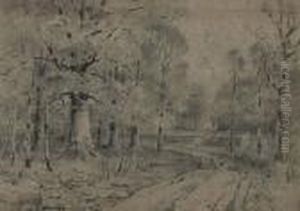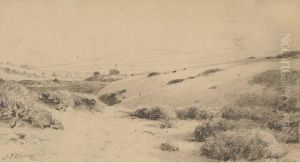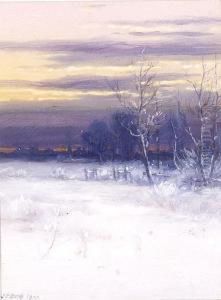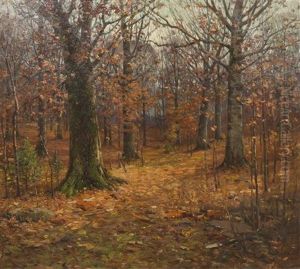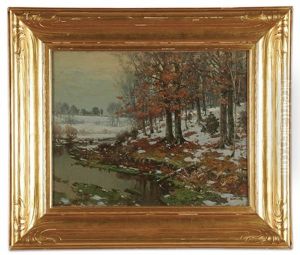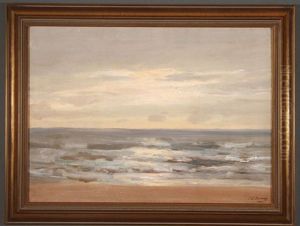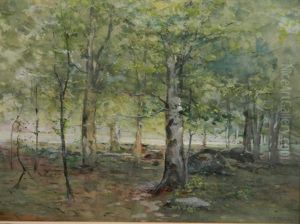John Elwood Bundy Paintings
John Elwood Bundy was an American artist known primarily for his landscape paintings. Born on May 31, 1853, in Guilford County, North Carolina, Bundy showed an interest in art from an early age. Despite the limited artistic resources available to him during his youth in rural America, his talent and passion for painting landscapes, particularly forest scenes, were evident early on.
Bundy's family moved to Indiana when he was a child, and he would spend the majority of his life there. He initially worked in a dry goods store and as a photographer, which influenced his artistic development. Bundy pursued formal art education at the Cincinnati Art School and later at the Art Students League of New York.
After his studies, Bundy returned to Indiana and began to establish himself as a significant figure in the Richmond, Indiana art scene. He became a central member of the Richmond Group of artists, a regional cluster of painters who were active in the late 19th and early 20th centuries and shared an interest in depicting the Indiana landscape. Bundy's work was characterized by its realistic representation of nature, with a particular focus on the depiction of trees, which he rendered with great detail and a sense of reverence.
Bundy served as the head of the art department at Earlham College, a Quaker institution in Richmond, for over twenty years. His influence extended through his teaching, as he mentored a generation of artists who would contribute to the Hoosier School, a term used to describe Indiana-based landscape painters of the period. Bundy exhibited his work widely during his lifetime, including at the Hoosier Salon, where he received accolades for his contributions to American art.
John Elwood Bundy's legacy is preserved through his paintings, which continue to be celebrated for their beauty and faithful representation of the Midwestern landscape. He passed away on January 17, 1933, in Richmond, Indiana, leaving behind a body of work that is still admired by art enthusiasts and collectors today. His art is held in several public collections, including the Richmond Art Museum and the Indiana State Museum.

